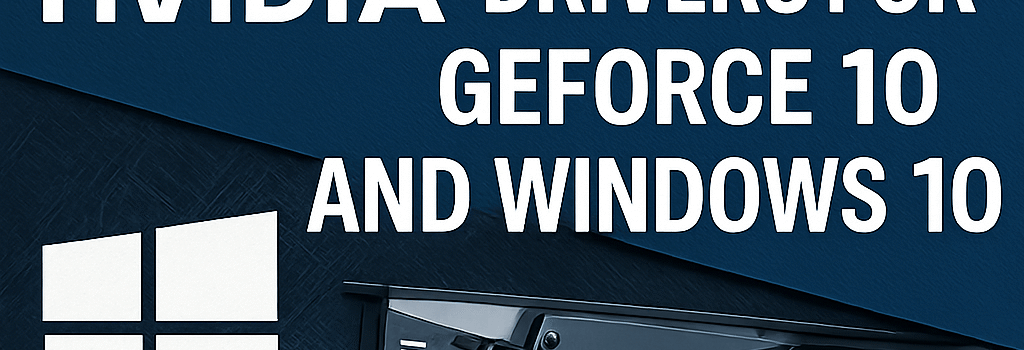Nvidia Stops Game Ready Drivers for GeForce 10 and Windows 10

In a major shift for PC gaming and professional users alike, Nvidia has announced that it will terminate Game Ready driver updates for its Maxwell, Pascal, and Volta-based GeForce GPUs after October 2025, and wind down all Windows 10 driver support by October 2026. While legacy cards will still receive quarterly security patches through 2028, gamers and content creators focused on the latest titles and operating systems will need to upgrade their hardware or OS to stay fully supported.
Support Timeline and Affected Architectures
- October 2025: Final monthly Game Ready drivers for GeForce GTX 900, 10-series, and Volta cards (e.g., GTX 1060, GTX 1080 Ti, Titan V).
- October 2026: End of all WHQL‐certified and Game Ready driver packages for Windows 10, including RTX 20-, 30-, 40-, and 50-series on that OS.
- Q4 2025–Q4 2028: Quarterly security‐only updates addressing CVE vulnerabilities, without performance optimizations.
Technical Details: Pascal, Maxwell, and Volta Architectures
The Pascal generation (GP104–GP109) debuted in 2016, featuring 16 nm FF+ process nodes, up to 3,584 CUDA cores (GP102 GP104), and support for GDDR5X memory at 10–11 Gbps. Maxwell cards (GM204–GM206) first introduced 28 nm GPUs with 2,048 CUDA cores on the GTX 980. Volta (GV100) targeted compute workloads with 16 nm FinFET, 5,120 cores, and Tensor Cores for AI acceleration. As these architectures age, maintaining optimized shader compilation, RTX ray-tracing fixes, and multi-GPU SLI/DA support has grown complex and resource-intensive for Nvidia’s driver team.
Windows 10 Driver Support Wind-Down
Microsoft’s official support for Windows 10 ends in October 2025, but home users can apply a free year of Extended Security Updates (ESUs) via the Microsoft Update Catalog. Nvidia will mirror this schedule, delivering Windows Display Driver Model (WDDM) 2.x security patches through October 2026. After that date, Windows 10 users won’t receive new drivers—Performance Monitor, GPU TDR fixes, and NVENC/NVDEC codec enhancements will be exclusive to Windows 11.
Performance Impact on Legacy Hardware
Without ongoing optimizations, Pascal and Maxwell cards may see frame-rate dips of 5–10% in recently released AAA titles. Driver features such as Resizable BAR, DLSS updates, and accident-proofing for Vulkan / DirectX 12 Ultimate won’t be back-ported. However, enthusiasts can continue using the latest nvlddmkm.sys security patches to mitigate kernel exploits identified in CVE-2023-XYZ and CVE-2024-ABC.
Developer and Modder Implications
Game developers relying on CUDA Toolkit support for Pascal and Volta will see the last feature freeze in January 2025. After that, new compute kernels targeting SM 6.x enhancements (e.g., FP16 speed-ups, Sparse Attention in Hopper/Blackwell) won’t compile efficiently on older GPUs. Modders and indie studios should plan migrations to Ampere or Ada Lovelace architectures for ray-tracing, AI-driven shaders, and deep-learning super sampling.
Security Updates & Best Practices
- Enable quarterly security‐only Nvidia driver updates via GeForce Experience → “Advanced Options.”
- Apply Windows 10 ESUs by following Microsoft’s official guide.
- Monitor CVE disclosures on NVD for Nvidia‐related advisories.
“Our mission is to keep legacy hardware secure, even as we push forward with next-gen AI and gaming technologies,” said Dr. Elena Sanchez, Senior GPU Driver Engineer at Nvidia. “Security updates ensure users aren’t vulnerable, without diluting resources from optimizing RTX 50-series performance.”
Future of GPU Software Support
Looking Ahead: Blackwell and Beyond
Nvidia’s upcoming Blackwell architecture, expected in 2026 on a 5 nm node, will introduce the next generation of Tensor cores, RT cores, and AI Super Sampling 4.0. With driver stacks optimized for CUDA 14.x and DLSS 5.0, Nvidia will focus on enhancing AI-driven rasterization, deep-learning denoisers, and Vulkan/OpenCL interoperability.
Comparative Vendor Policies
AMD has committed to supporting its RDNA 1 GPUs (e.g., Radeon RX 500 series) with both performance and security updates through mid-2027, while Intel’s Arc GPUs guarantee feature updates through 2028 under its Xe Vision program. Consumers weighing a next GPU purchase should consider long-term support guarantees as part of total cost of ownership (TCO).